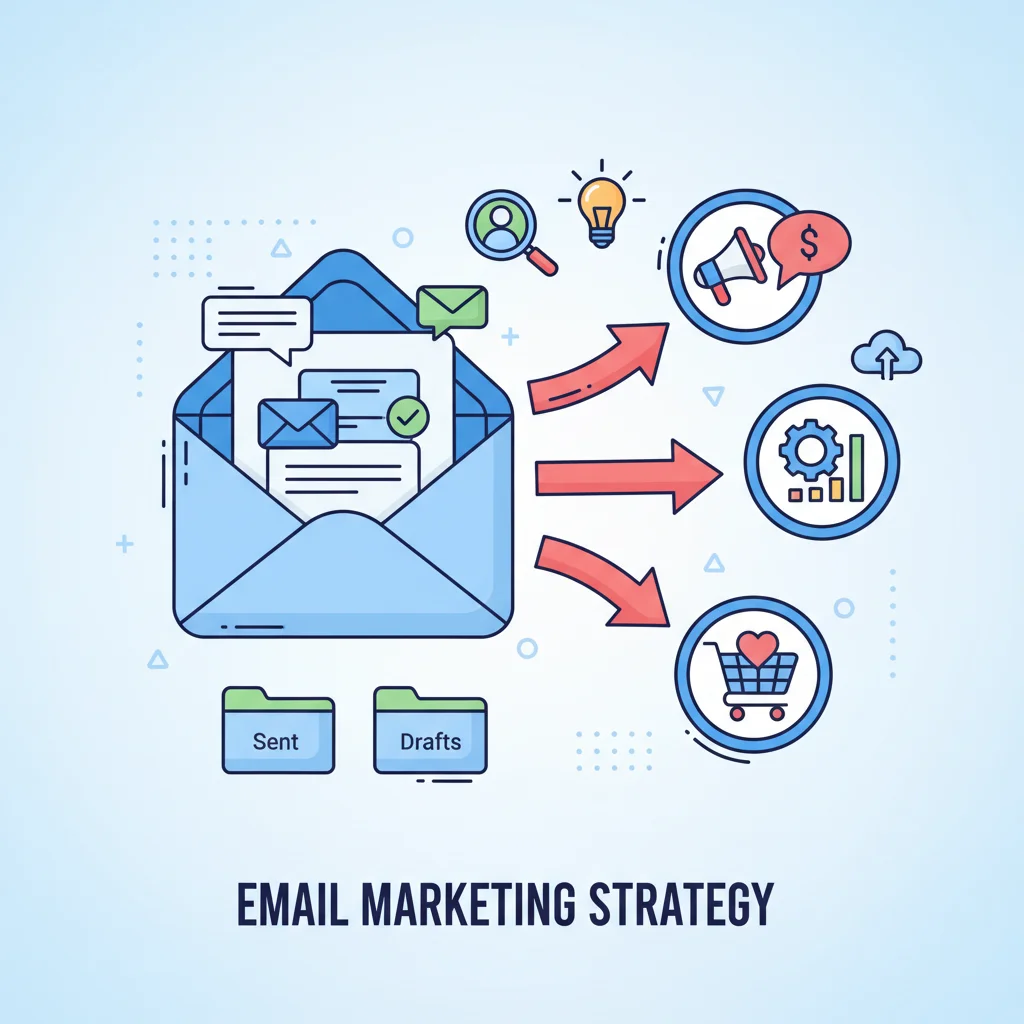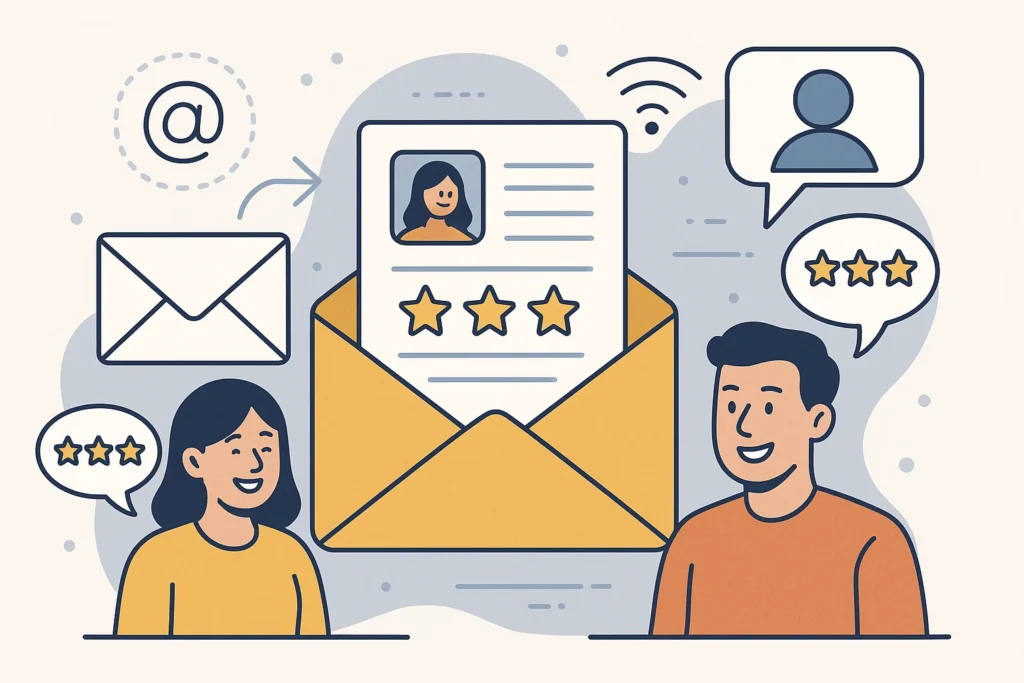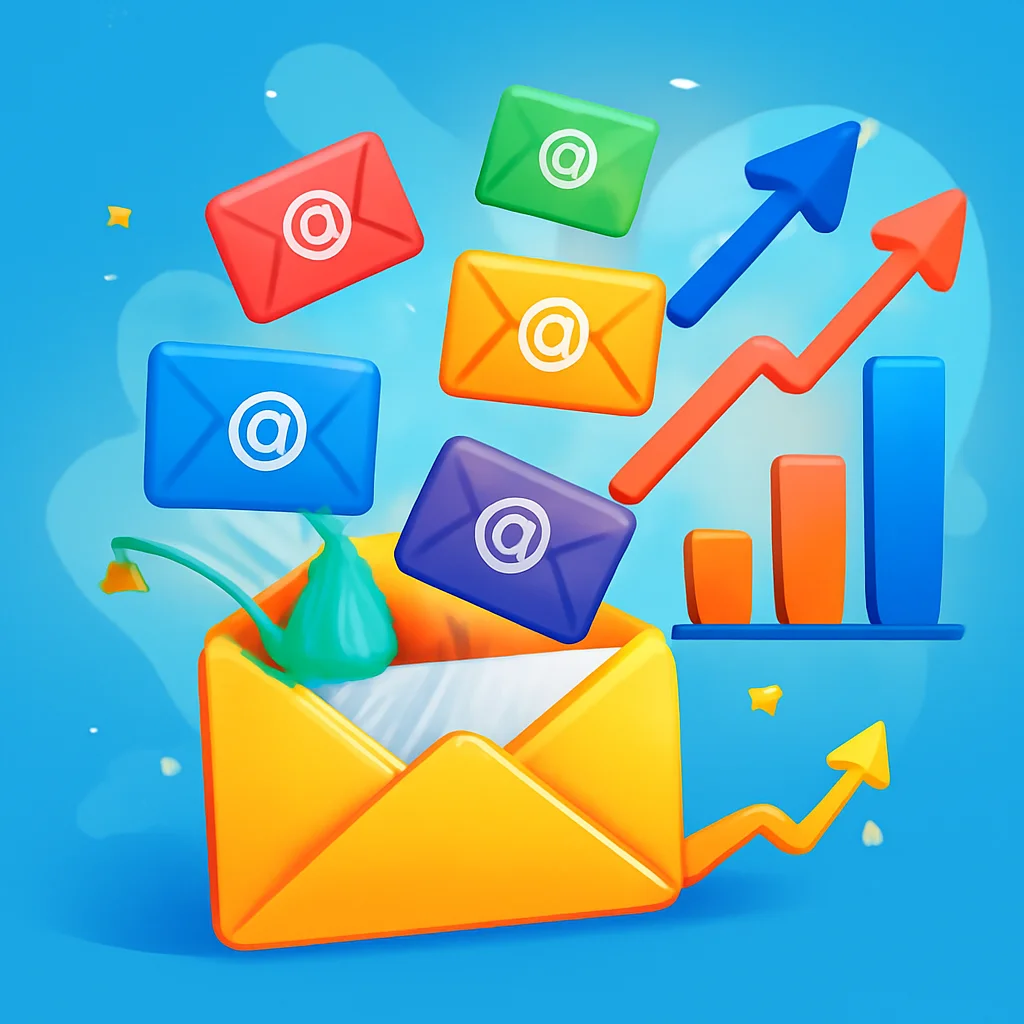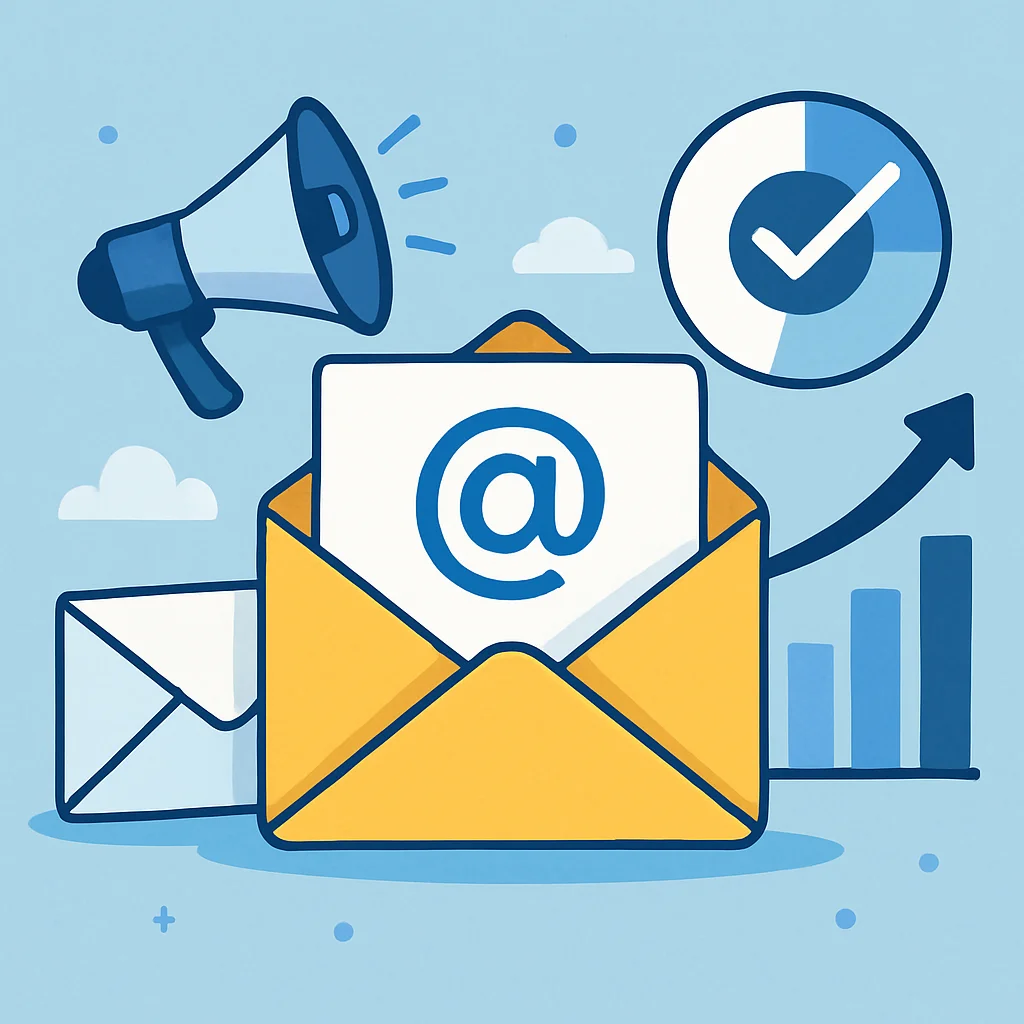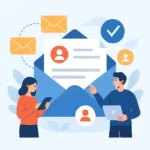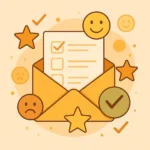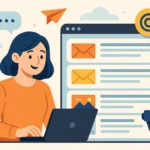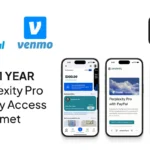Now Reading: 7 Steps to Build an Email List From Scratch
-
01
7 Steps to Build an Email List From Scratch
7 Steps to Build an Email List From Scratch
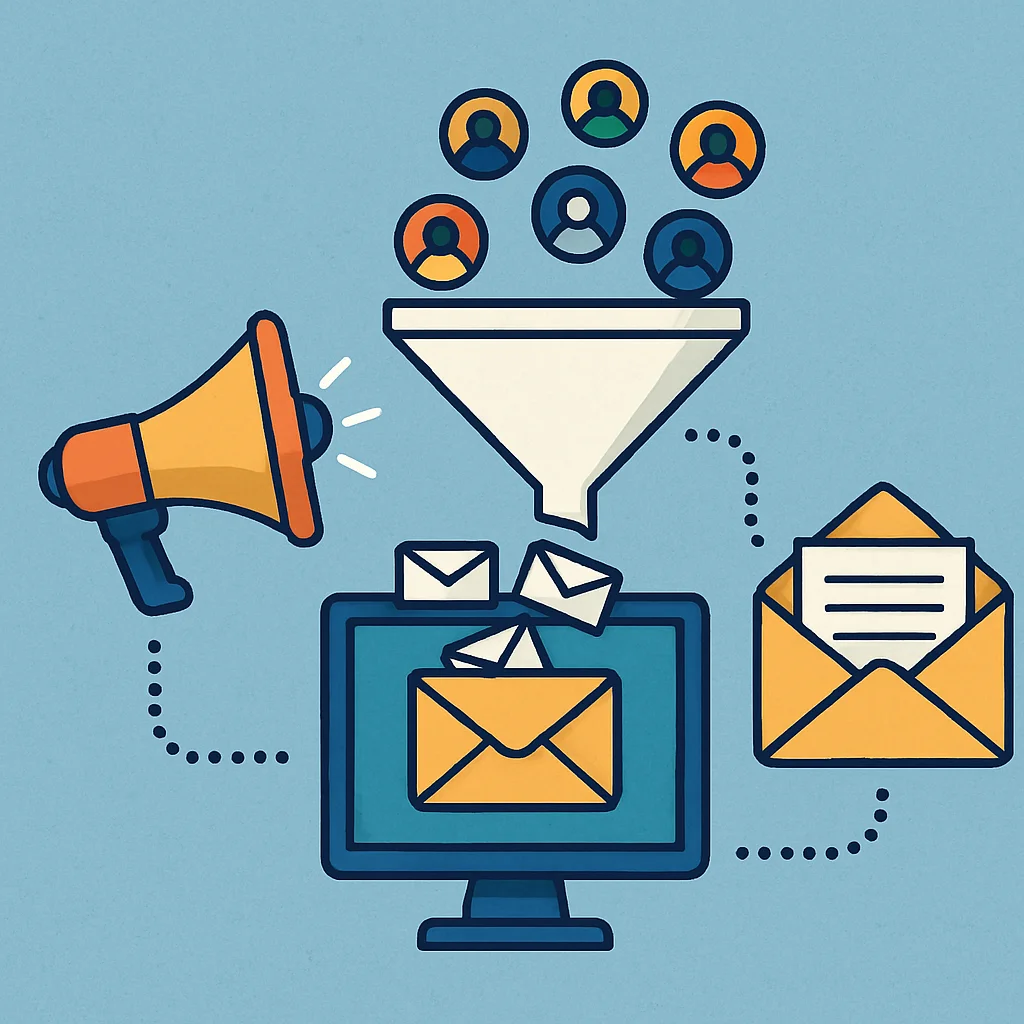
I stared at my empty email list with that sinking feeling in my stomach. Zero subscribers. Absolutely nobody to send my carefully crafted content to. If you’re looking to build email list from scratch, you probably know this frustration all too well. The good news? That empty list is actually your biggest opportunity. In this guide, I’ll walk you through the exact steps I used to go from zero to my first 1,000 subscribers-without fancy tools or a massive marketing budget.
Key Takeaways
How to build an email list from scratch? Follow these essential steps:
- Choose an email service provider that fits your needs and budget (ConvertKit, Mailchimp, and MailerLite are great for beginners)
- Create a compelling lead magnet that solves a specific problem for your target audience
- Design user-friendly sign-up forms and place them strategically on your website
- Promote your lead magnet across your social media channels and content
- Implement a welcome sequence to engage new subscribers immediately
- Consistently deliver value to maintain and grow your subscriber relationships
- Analyze and optimize your approach based on open rates and conversions
Why Email Lists Still Matter (A Lot)
You might be thinking, “Isn’t email kinda… old school?” Nope! Email marketing continues to crush other channels with its ROI. Some quick facts:
- Email subscribers are 3x more likely to share your content than social media followers
- 99% of consumers check their email daily (some of us way too often!)
- Email is 40x more effective at acquiring customers than Facebook or Twitter
Plus, when someone gives you their email, they’re basically saying, “I trust you enough to let you into my inbox.” That’s huge in today’s privacy-conscious world.
Choose The Right Email Service Provider
Your first big decision is picking an email service provider (ESP). This is the platform you’ll use to collect, store, and send emails to your subscribers.
As a beginner building an email list from scratch, you don’t need all the fancy bells and whistles. Focus on these features:
- User-friendly interface – You don’t want to waste hours figuring out how to send a simple email
- Automation capabilities – Even basic automations like welcome emails will save you tons of time
- Mobile-responsive templates – Over 60% of emails are opened on mobile devices
- Affordable pricing tiers – Look for providers that let you start cheap and scale up as you grow
Top ESPs For Beginners
I’ve tested dozens of email platforms, and these are my top recommendations for anyone starting from zero:
MailerLite: Super affordable and surprisingly powerful. Their free plan includes automation, and their paid plans start at just $10/month.
ConvertKit: Designed specifically for creators and small businesses. Their interface is clean and intuitive. Slightly pricier but worth it if you’re serious.
Mailchimp: The OG email platform. Their free plan lets you have up to 2,000 subscribers, which is perfect when you’re just starting out.
Flodesk: Newer player with gorgeous templates and a flat-rate pricing model regardless of list size.
Don’t overthink this step! You can always switch providers later if needed. Just pick one and move forward.
Useful Articles:
Create An Irresistible Lead Magnet
Here’s the cold, hard truth: nobody’s gonna join your email list just because you have a “Subscribe to my newsletter” button. Sorry!
People need a compelling reason to hand over their email address. That’s where lead magnets come in-they’re the “ethical bribes” you offer in exchange for someone’s contact info.
The best lead magnets solve a specific problem for your ideal audience. They provide immediate value and give a taste of what you offer.
Lead Magnet Ideas That Actually Convert
- Checklists and cheat sheets: Quick-reference guides people can use right away
- Mini-courses: Delivered via email over 3-5 days
- Templates or swipe files: Done-for-you frameworks people can customize
- Free tools or calculators: Interactive resources that provide personalized results
- Discount codes: Especially effective for e-commerce businesses
- Quizzes: Fun, interactive experiences with personalized results
I created a simple PDF checklist for one client that converted at 68%-meaning more than half the people who saw it signed up! The secret? It solved a very specific pain point for her audience.
How To Create Your First Lead Magnet
- Identify your audience’s biggest pain point – What question do they ask you most often?
- Choose the simplest format to deliver that solution (don’t overcomplicate it!)
- Create your content – Focus on substance over style initially
- Add your branding – Make it look professional but don’t get stuck in design hell
- Deliver it automatically through your ESP
Pro tip: Your lead magnet doesn’t need to be perfect. A “good enough” lead magnet that exists will always outperform the perfect one that never gets finished.
Design High-Converting Sign-Up Forms
Now that you’ve got your lead magnet ready, you need ways for people to actually sign up for it. This is where sign-up forms come into play.
The best forms strike a balance-they’re noticeable without being annoying, and they clearly communicate the value of subscribing.
Types Of Sign-Up Forms To Consider
- Embedded forms: Placed directly within your content where interest is highest
- Pop-ups: Appear after a certain time, scroll depth, or exit intent
- Landing pages: Dedicated pages focused solely on your lead magnet
- Header/footer bars: Subtle but persistent calls-to-action
- Slide-ins: Less intrusive than pop-ups but still eye-catching
Elements Of High-Converting Forms
When designing your sign-up forms, include these key elements:
- Compelling headline that states the benefit clearly
- Brief description of what they’ll get (keep it under 2 sentences)
- Minimal form fields (just email for starters-every additional field reduces conversions)
- Strong call-to-action button (avoid generic “Submit” text)
- Optional: social proof like subscriber counts or testimonials
I tested two different form designs for my own list-one asked for name and email, the other just email. The simpler form converted 26% better! Sometimes less really is more.
Strategic Form Placement On Your Website
Where you place your forms matters just as much as how they look. Think about the user journey on your site and intercept people at moments of highest interest.
High-Converting Placement Spots
- End of blog posts: Readers who make it to the end are already engaged
- Resource pages: People browsing resources are in learning mode
- About page: Visitors who read about you are interested in connecting
- Homepage: Capture new visitors before they click away
- After high-value content: Strike while the iron is hot
Don’t be afraid to use multiple form types and placements. Someone might ignore your header bar but respond to an exit-intent popup or embedded form.
Useful Articles:
Promote Your Lead Magnet Everywhere
Building an email list from scratch requires proactive promotion. Your amazing lead magnet won’t do any good if nobody knows it exists!
Social Media Promotion Strategies
- Pin posts about your lead magnet to the top of your profiles
- Create platform-specific content that teases the value of your lead magnet
- Add sign-up links in your bio/profile sections
- Share testimonials from people who loved your lead magnet
- Go live to talk about the problems your lead magnet solves
Content Marketing Approaches
- Write blog posts that address the same topic as your lead magnet
- Create YouTube videos that give a preview of your solution
- Guest post on relevant blogs with your lead magnet as the natural next step
- Appear on podcasts where your target audience listens
Offline Promotion Ideas
Don’t forget about offline opportunities too:
- Business cards with a simple URL to your sign-up page
- QR codes at in-person events
- Speaking engagements where you can offer your lead magnet
- Networking events where you can mention your resource
The key is consistency. Mention your lead magnet regularly without being spammy about it. I try to promote mine at least 3-5 times a week across different channels.
Create An Engaging Welcome Sequence
You’ve done it! People are signing up for your list. But what happens next is crucial-this is your chance to make a great first impression and set the tone for your relationship.
A welcome sequence is a series of automated emails that go out when someone first subscribes. It’s like the digital equivalent of rolling out the red carpet.
Elements Of An Effective Welcome Sequence
- Immediate delivery of your promised lead magnet
- Personal introduction that helps subscribers connect with you
- Setting expectations about what they’ll receive and how often
- Invitation to engage by replying or following you elsewhere
- Value-packed content that demonstrates your expertise
Sample Welcome Sequence Structure
Email 1 (Immediate): Deliver your lead magnet with a warm welcome and quick intro.
Email 2 (Day 2): Share your story and why you’re qualified to help them. Ask a question to encourage replies.
Email 3 (Day 4): Provide another valuable resource or tip related to your lead magnet.
Email 4 (Day 6): Address common questions or obstacles your subscribers face.
Email 5 (Day 8): Invite deeper engagement-whether that’s checking out your services, joining your community, or following you on social media.
I’ve found that welcome sequences with 4-5 emails tend to perform best. Any longer and you risk overwhelming new subscribers.
Consistently Deliver Value To Your Subscribers
The fastest way to build an email list from scratch is to make your current subscribers so happy they tell others about you. Word-of-mouth is powerful!
This means consistently delivering emails that your subscribers actually look forward to opening.
Content Ideas For Regular Emails
- Behind-the-scenes looks at your process or business
- Case studies or success stories that inspire
- Tutorials and how-to content
- Curated resources your audience would find valuable
- Personal stories that relate to your expertise
- Industry news and your take on recent developments
- Answers to subscriber questions
Email Frequency Best Practices
How often should you email your list? There’s no perfect answer, but consistency matters more than frequency.
Whether you choose weekly, bi-weekly, or monthly, stick to a schedule your subscribers can count on. I email my list every Wednesday morning, and they’ve come to expect it.
The most important thing is to never disappear for months and then suddenly flood people’s inboxes. That’s a fast track to unsubscribes.
Useful Articles:
Analyze And Optimize Your Results
Building an email list from scratch isn’t a “set it and forget it” process. You need to regularly check what’s working and what isn’t, then adjust accordingly.
Key Metrics To Track
- Growth rate: How many new subscribers you’re gaining (and losing) each week/month
- Conversion rate: The percentage of visitors who see your forms and subscribe
- Open rate: The percentage of subscribers who open your emails
- Click-through rate: The percentage who click links in your emails
- Engagement over time: Are newer subscribers more or less engaged than older ones?
Most ESPs provide these metrics in their dashboards. Check them at least monthly to spot trends.
A/B Testing For Continuous Improvement
Small tweaks can lead to big improvements in your list-building efforts. Consider testing:
- Different lead magnets to see which attracts more subscribers
- Various form designs and placements
- Subject lines for higher open rates
- Call-to-action text for better click-throughs
- Email sending times to find your audience’s sweet spot
One client increased their conversion rate by 34% just by changing their button color and adding a testimonial to their form. These small details add up!
Advanced List-Building Strategies
Once you’ve mastered the basics of building an email list from scratch, you can implement some more advanced strategies to accelerate your growth.
Referral Programs
Encourage your current subscribers to refer friends by offering incentives. This could be exclusive content, discounts, or even physical products for successful referrals.
Strategic Partnerships
Partner with complementary businesses or content creators to cross-promote each other’s lead magnets. This gives you access to an established audience that likely matches your ideal subscriber profile.
Content Upgrades
Create specific lead magnets that perfectly complement individual blog posts or content pieces. These targeted resources often convert much higher than generic lead magnets.
For example, if you have a blog post about meal planning, offer a meal planning template as the content upgrade. I’ve seen conversion rates as high as 50% with well-matched content upgrades.
Webinars And Workshops
Host free online events that provide value and naturally lead to email sign-ups. The registration process builds your list, and the live interaction builds stronger connections.
Contests And Giveaways
Run strategic giveaways where email subscription is part of the entry process. Just make sure the prize attracts your ideal audience, not just freebie-seekers.
Maintaining List Health And Engagement
As your list grows, keeping it healthy becomes increasingly important. An engaged, responsive list of 500 is far more valuable than a disinterested list of 5,000.
Regular List Cleaning
Every few months, consider removing subscribers who haven’t opened your emails in a long time (6+ months). This might seem counterintuitive, but it:
- Improves your deliverability rates
- Gives you more accurate engagement metrics
- Saves you money if your ESP charges by subscriber count
Before removing inactive subscribers, try a re-engagement campaign to win them back.
Segmentation For Relevance
As your list grows, start segmenting subscribers based on:
- Interests they’ve indicated
- Behavior (what they click on, open, etc.)
- Purchase history if you sell products
- How they joined your list (which lead magnet)
Then send more targeted content to each segment. My open rates jumped by 23% when I started sending more targeted emails instead of one-size-fits-all broadcasts.
Building an email list from scratch takes consistent effort, but it’s one of the most rewarding marketing investments you can make. Your email list becomes an asset that grows in value over time, connecting you directly with people who want to hear from you.
Building an email list from scratch might seem daunting at first, but with this guide, you now have a clear roadmap to follow. Start with the basics-choose your ESP, create a compelling lead magnet, set up strategic sign-up forms, and deliver consistent value. Then optimize and expand as you grow.


